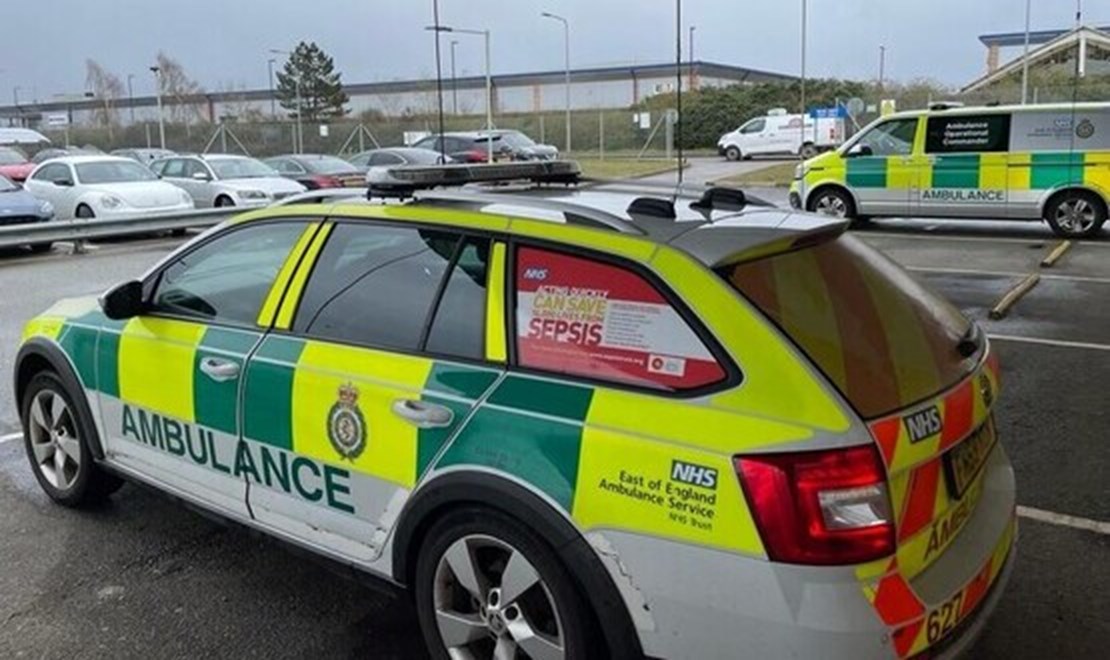East of England Ambulance Service NHS Trust will become the first ambulance service to pilot a new technology that provides robust connectivity for ambulance crews and vehicles, even in areas where cellular connectivity is impossible.
Hybrid Connex is a €5.7m research and development initiative co-funded by the European Space Agency (ESA) ARTES 5G Strategic Programme Line (SPL) and the UK Space Agency (UKSA) to create an always-connected, cloud-based digital ambulance of the future. The Hybrid Connex technology amalgamates software, hardware, and cellular and satellite services into one package that effectively creates unbreakable, permanent connectivity. Arden & GEM is part of the Hybrid Connex team working alongside Excelerate Technology, Livewire, the Satellite Applications Catapult and Vodafone.
The pilot will involve six East of England ambulance vehicles and will be operational between August and October 2023, after which it will be fully evaluated and, if successful, has the potential to be offered as a service to all ambulance trusts.
Philip Elvidge, electronic patient record clinical lead and paramedic at East of England Ambulance Service, said: “Thetford Forest is renowned among our crews as a complete dead spot for cellular connection so if I end up responding to a call in Thetford, without good knowledge of local services and no connectivity to access that information, I may end up transporting that patient to hospital because I was unaware a more suitable pathway was available.
“Another issue we face is how poor connectivity affects the telemetry on our cardiac monitors. For example, if you were diagnosing an MI [myocardial infarction] in a connectivity black spot you couldn't then send the ECG off to a specialist consultant for review of the ECG changes prior to our arrival. I’ve had this exact issue in the past in areas where there has been very limited cellular connection. You find yourself having to drive up the road and around the corner to find a location where you’re able to send the ECG successfully. It wastes valuable time which is vital to the patient.”
Another positive of having permanent connectivity within the ambulance vehicle is that it enables staff to catch up on their Continued Professional Development (CPD) during times when they are not providing direct patient care would otherwise simply be waiting.
“Resilient connectivity within ambulance services is vital as it enables crews to access the clinical and service information they need to ensure patients are treated and signposted appropriately. Communication with hospitals and specialists is also improved which can increase the range of point-of-care diagnostics that can be carried out and open the door to new patient pathways. We are excited to see the results from this pilot and begin working with other ambulance trusts to assess the opportunities for their services.”
Monica France, digital transformation programme manager at Arden & GEM
Bethan Evans, chief operating officer at Excelerate Technology says: “We are delighted to be working with East of England Ambulance Service and we hope to prove how this superior level of connectivity will enable all regional ambulance services to achieve so much more with technology, whether that is for the improvement of patient care or to achieve greater efficiency in their performance. This technology is being adopted in the most advanced parts of the world and we can now deliver that capability to our emergency services customers in the UK with patients being the primary beneficiaries.”
To find out more visit www.hybridconnex.co.uk
